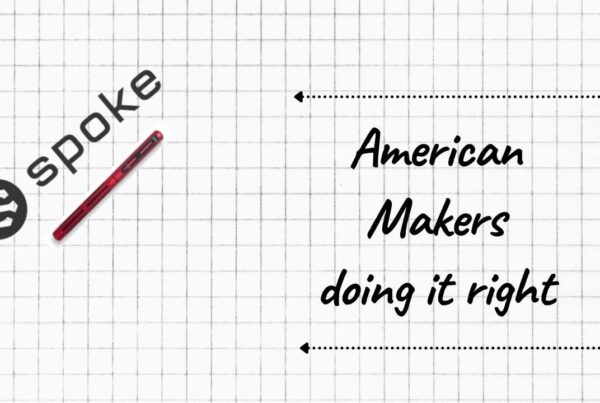RE-SHORING: It’s Time to Rebuild America’s Manufacturing Power
 Welcome to RE-shoring, a new series where I talk about bringing manufacturing back to the Americas.
Welcome to RE-shoring, a new series where I talk about bringing manufacturing back to the Americas.
I don’t talk much about where I grew up. Not for any particular reason, mostly that it’s only a small part of my past. When you’ve spent as much of your life moving and traveling as I have, it all kind of blurs together. That said, there are still parts of me that will always be, “just a kid from Buffalo.”
Western New York will always be special to me, but to most, it looks very similar to many other rust-belt cities in the Northeast. Take a drive around Buffalo’s 290 loop, and you can still see thousands of manufacturing and warehousing facilities, from small niche shops right on up to the massive grain silos lining the lakeshore. Many of my friends and family still work in those facilities. Like other rust belt cities, many of those facilities are long empty and abandoned.
It’s a frequent occurrence if we’re driving down the road, that I point out facilities that I’ve worked at or been inside. I get that trait from my father.
It’s what makes many of the rust belt towns and cities feel familiar, why I find myself oddly at home in cities like Detroit or Chicago. There’s a strange familiarity in seeing those still-chugging manufacturing facilities and tiny diners, sitting next to gargantuan buildings that are rotting husks of their former selves.
I think it’s what makes so many areas that have experienced similar attrition and manufacturing trauma feel familiar. The rust belt from Buffalo to Pittsburgh, across Ohio and Detroit, and other cities that I wouldn’t have assumed share these traits, like Baltimore and Birmingham who had most of their blue-collar jobs ripped away as steel left for overseas.
The removal of blue-collar jobs, and with it much of American middle class, has proven good for the balance sheets but bad for the nation and its people. That said, I do not want to focus on decisions made decades ago, other than to say that they were mistaken.
What I Want to Do is Focus on The Future.
Coronavirus has re-taught the world many difficult lessons. One of those being that international supply chains don’t work if we can’t move products internationally.
From the conversations that I’ve had, this appears to be pointing to the resurgence of manufacturing in the Americas.
At this point, I need to be clear that this is not a damnation of our neighbors to the North in Canada, nor the great life sciences work that has been done over in Ireland and the UK. This isn’t to say that everyone needs to pull every job back from all over the world.
This is my passionate plea to stop the race to the bottom.
The, “cheaper is always better,” mentality. The idea that people will pay for it if you can cut the price, regardless of the sacrifices made in quality or American jobs.
I would like to use this series as an interactive approach to discuss how we can find ways to bring back jobs. No part of me believes these jobs are going to be 1-1 from the ones we have lost. These jobs will be the first step back. Automation and machines, software and data analytics, all working in concert with good, hard-working people; that’s how we’ll rule the day.
This is my ask of you: If you’re currently planning, building, or expanding an American manufacturing facility, please reach out. If you need help, I’d be happy to offer my services. Either way, I’d love to highlight the work that you are doing and use your experiences to help the rest of our industry do the same.
Why Should We Re-Shore?
Why should we re-shore manufacturing? Personally, because it brings back stable, well-paying jobs. It provides centers for the community. It gives people hope, the idea that they could work hard and be rewarded with comfort and security for their families.
Why should we re-shore manufacturing? Because once upon a time the American Dream was real, and there are still so many great people willing to work and fight for it.
Not good enough? We need to find a way to make it work on the bottom line?
International supply chains are broken. With single sources of finished goods coming primarily from overseas, we’re losing the opportunity to sell goods. We have product sitting in ships that cannot dock. We’re leaving money on the table.
Made in the USA is only becoming a bigger and bigger theme – and not just in country music.
Give people the opportunity to pay a fair price for a good product and there will be a market – I guarantee it. Looking down at my Darn Tough socks, my Red Wing boots, and all the other odds and ends in my pocket with the American flag on them, I can promise you there is money to be made if you are willing to take the leap.
Again, please join me on the re-shoring journey. If you are looking to start a new company, expand your current operations, or want to share your story please reach out and share this with the people you know.
Stay tuned for the second installment of this series, where we’ll go into detail and talk about different ways to design a manufacturing facility.
Want more immediately? Check out everything Digital Transformation.



